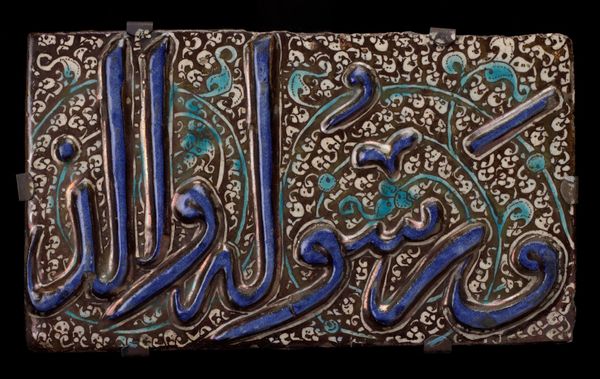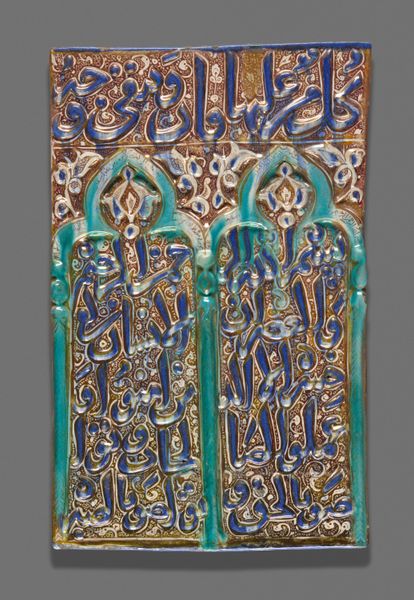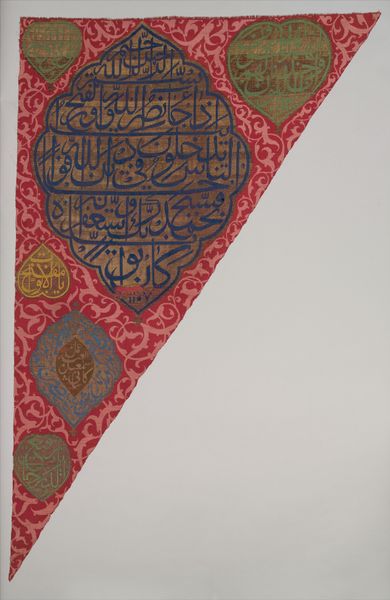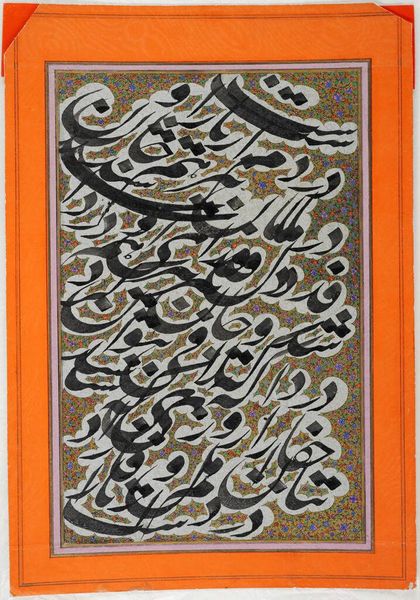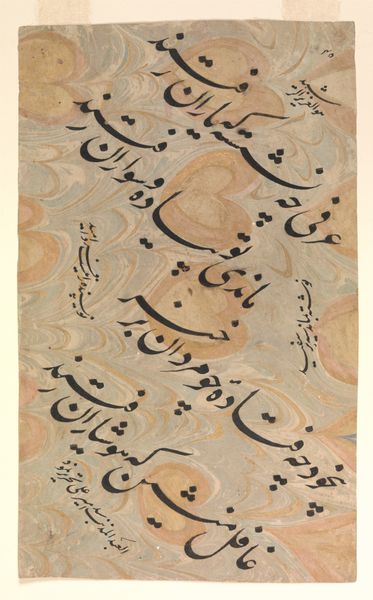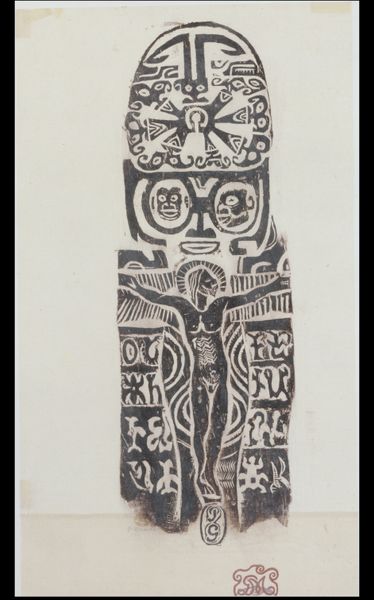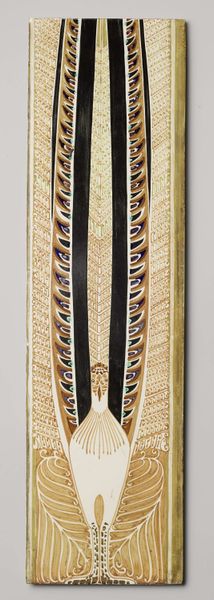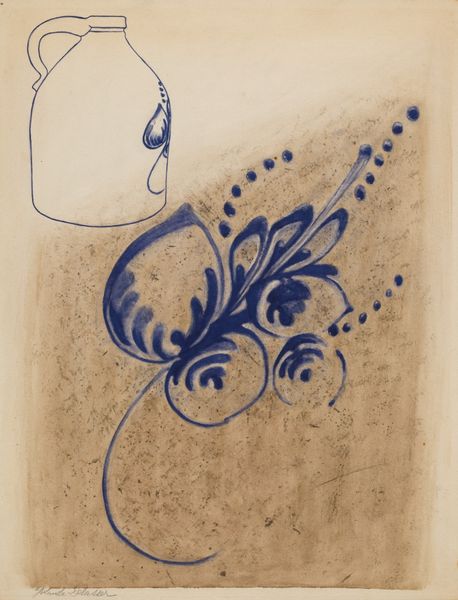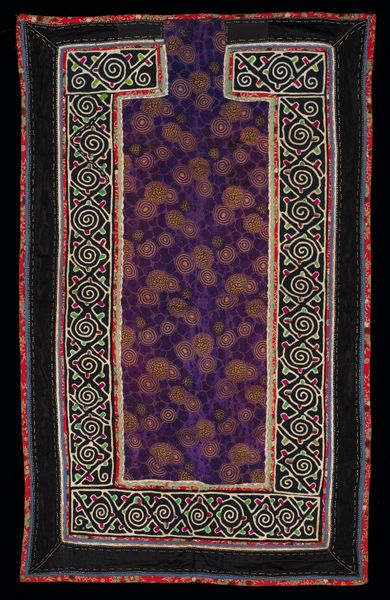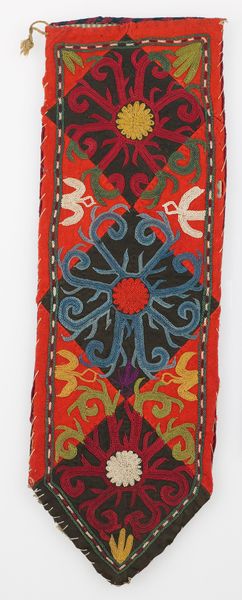
ceramic
#
asian-art
#
ceramic
#
geometric
#
line
#
islamic-art
#
decorative-art
Dimensions: 38.6 × 27.3 × 4.7 cm (15 1/8 × 10 3/4 × 1 13/16 in.)
Copyright: Public Domain
Editor: This is a ceramic tile, dating back to the 14th century. It’s believed to have been part of a dome, and now resides at the Art Institute of Chicago. The blue and white floral design against the dark background is visually stunning. What can you tell me about its historical significance? Curator: Its visual appeal, precisely, stems from its original architectural context. Domes, adorned with such tiles, were potent symbols of power and devotion. This tile, likely Islamic, isn't merely decorative; it embodies complex social and religious narratives of the time. How do you think its geometric design contributes to its symbolism? Editor: It’s interesting to think about geometric shapes carrying symbolism. It does add to the piece's sophistication, moving beyond a simple representation of nature. How did its placement on a dome impact the public perception of the space it adorned? Curator: Think about the viewer, approaching a sacred building. The shimmering turquoise and the precisely placed geometry signaled wealth, sophistication, and divine connection. But also consider the socio-political landscape. Islamic art often flourished under specific patronage, linking artistic production directly to powerful individuals or institutions. Could this tile reveal anything about the commissioner's political agenda or their role as a benefactor of the arts? Editor: I hadn’t considered it as a statement of power as well as religious devotion. So the act of adorning a building wasn’t purely aesthetic. Curator: Precisely. Islamic art is rarely ‘art for art’s sake.’ It’s woven into the fabric of life, reinforcing social structures and beliefs. Examining this tile through a socio-historical lens gives it a new dimension. It’s not just a beautiful object; it's a window into a complex society. What did you learn that surprised you most? Editor: I hadn't fully appreciated how the design and context together served as a visual representation of power and faith. I’ll definitely consider that in the future!
Comments
No comments
Be the first to comment and join the conversation on the ultimate creative platform.
